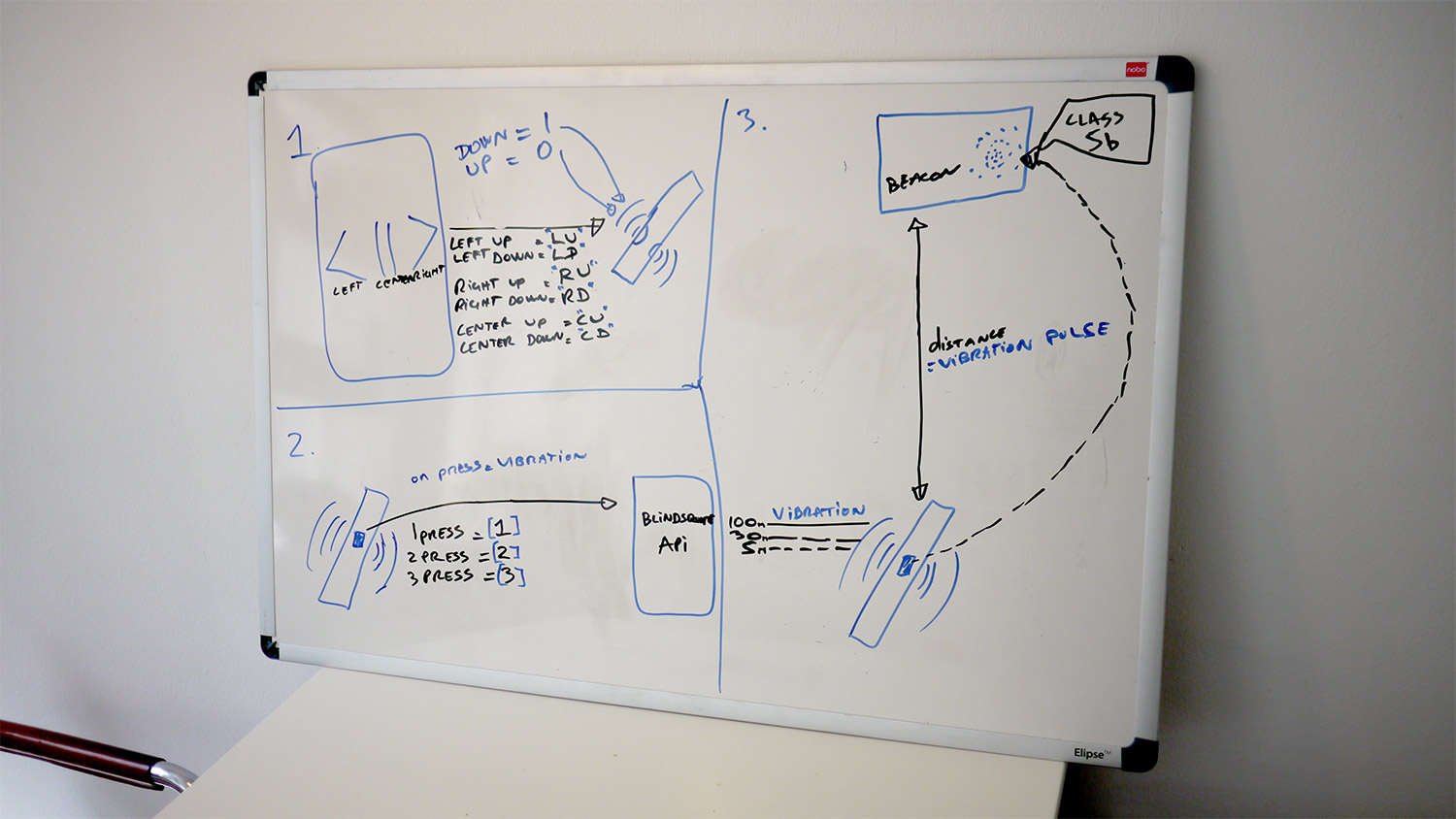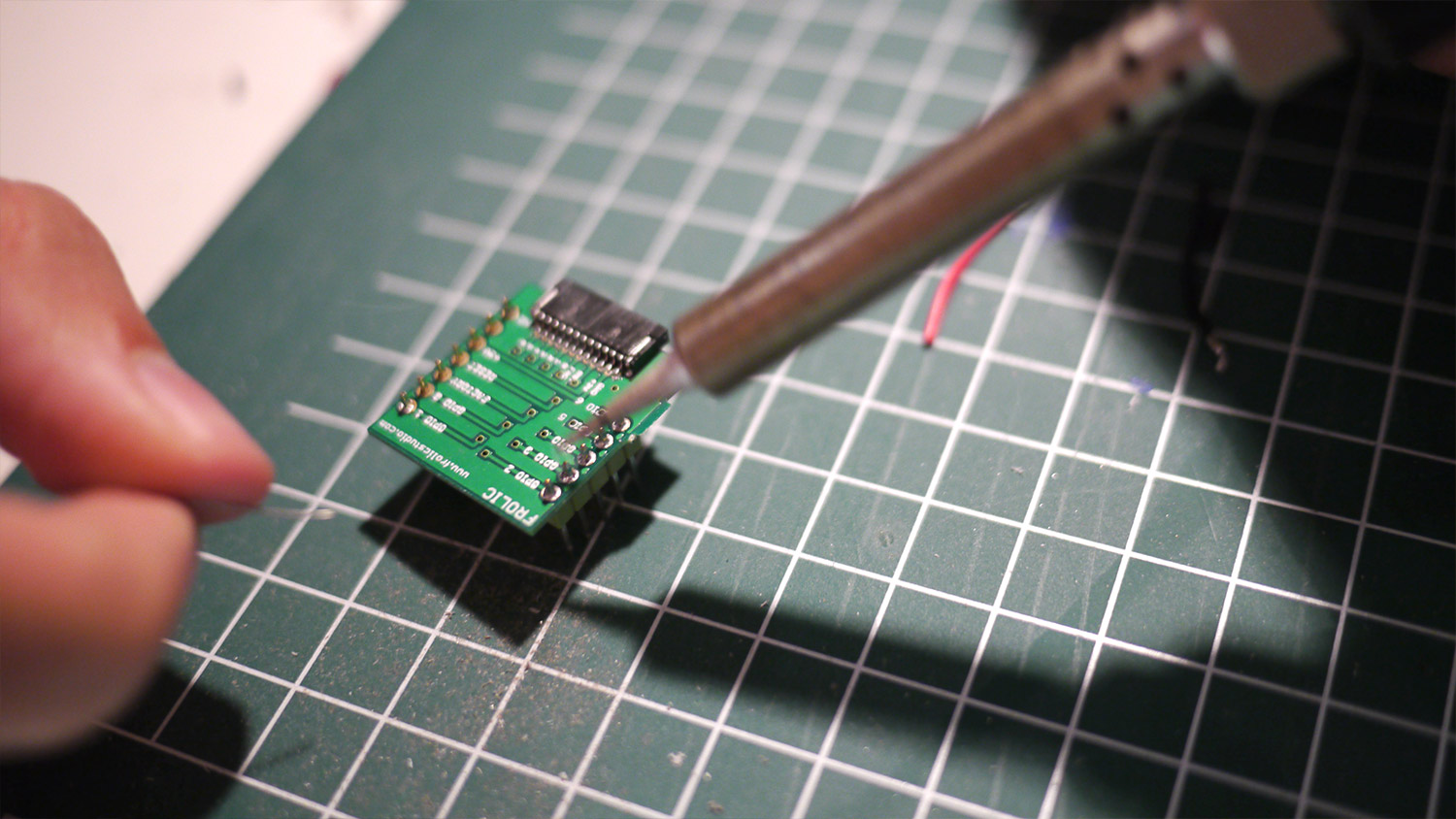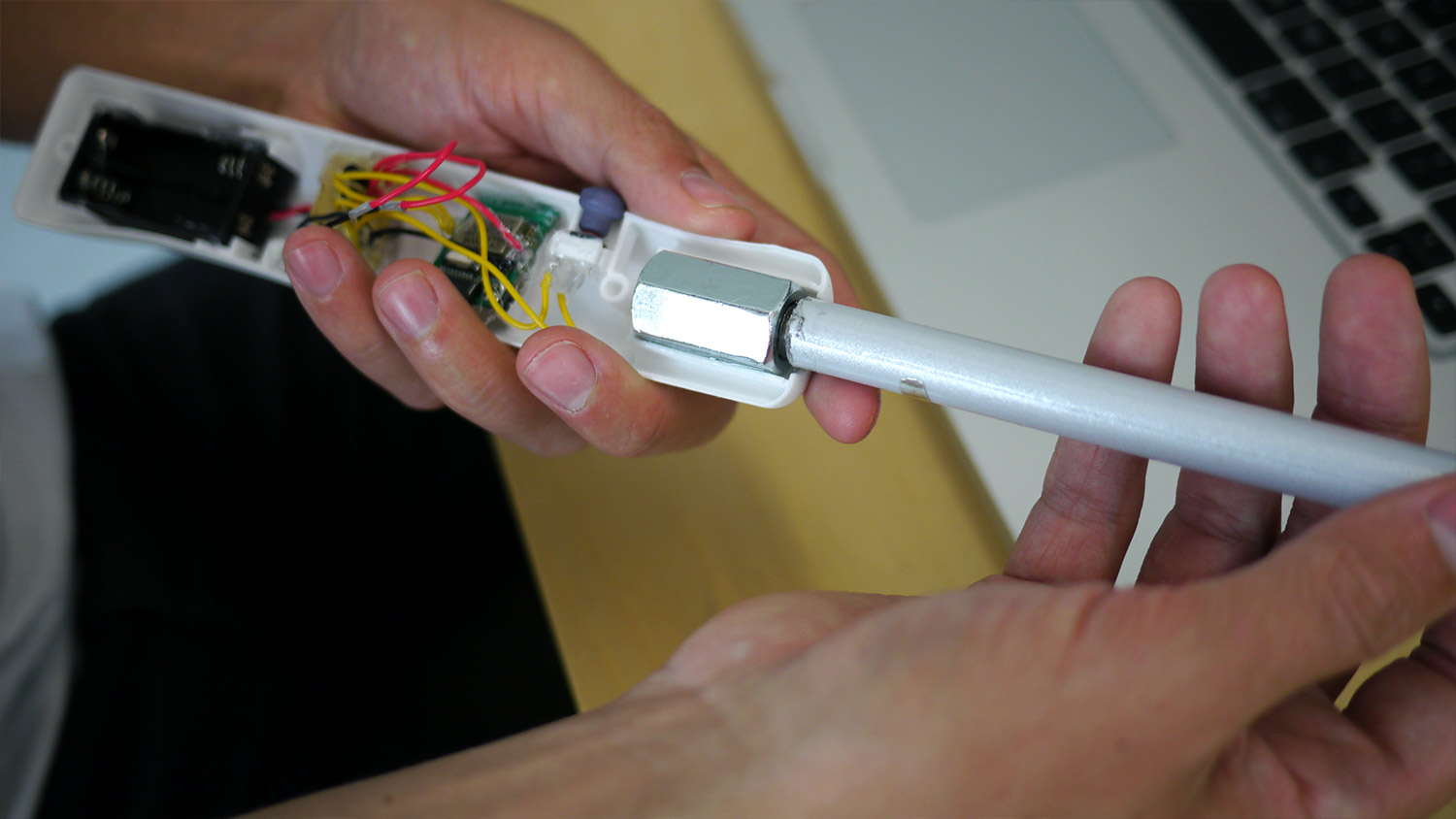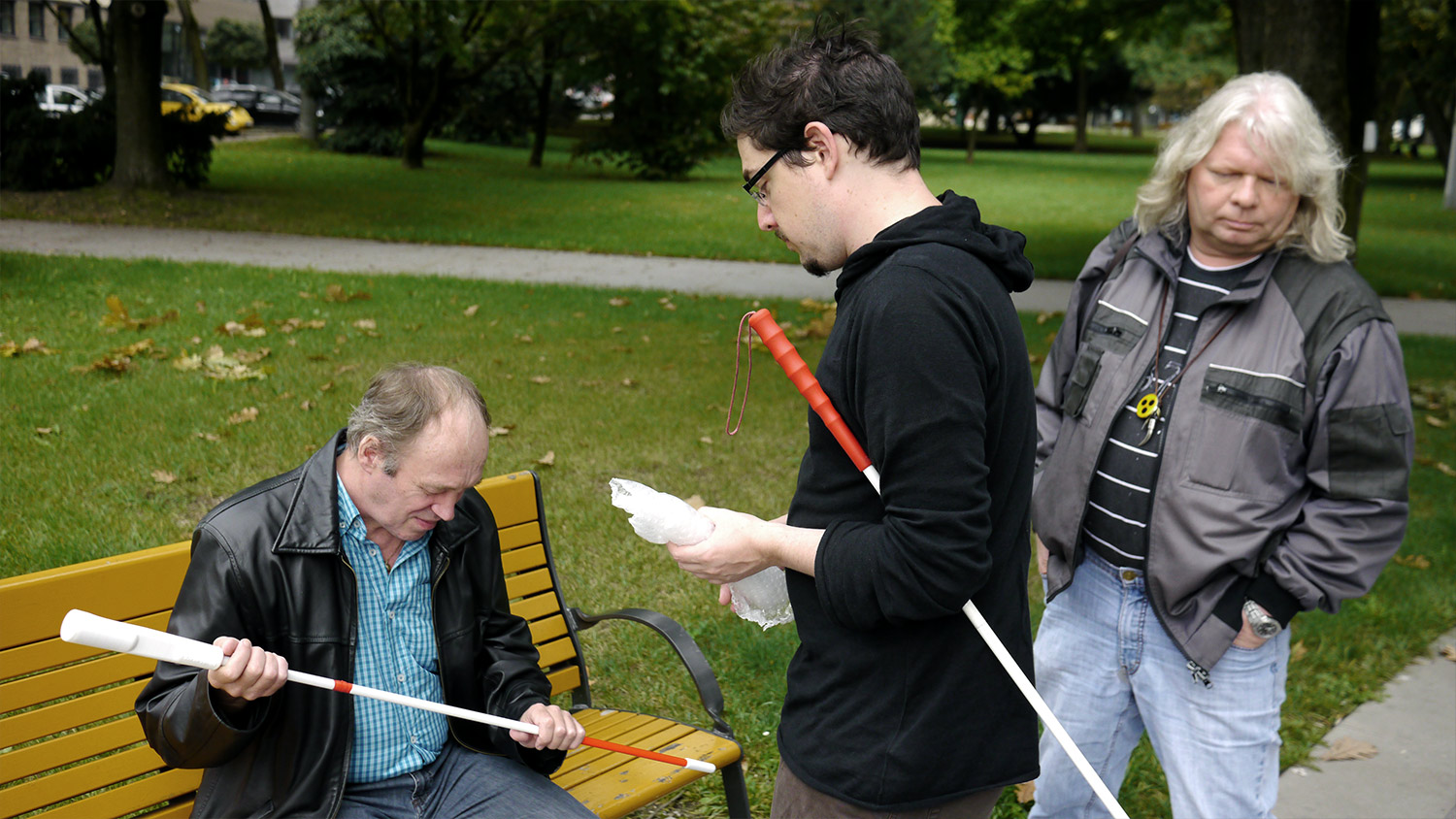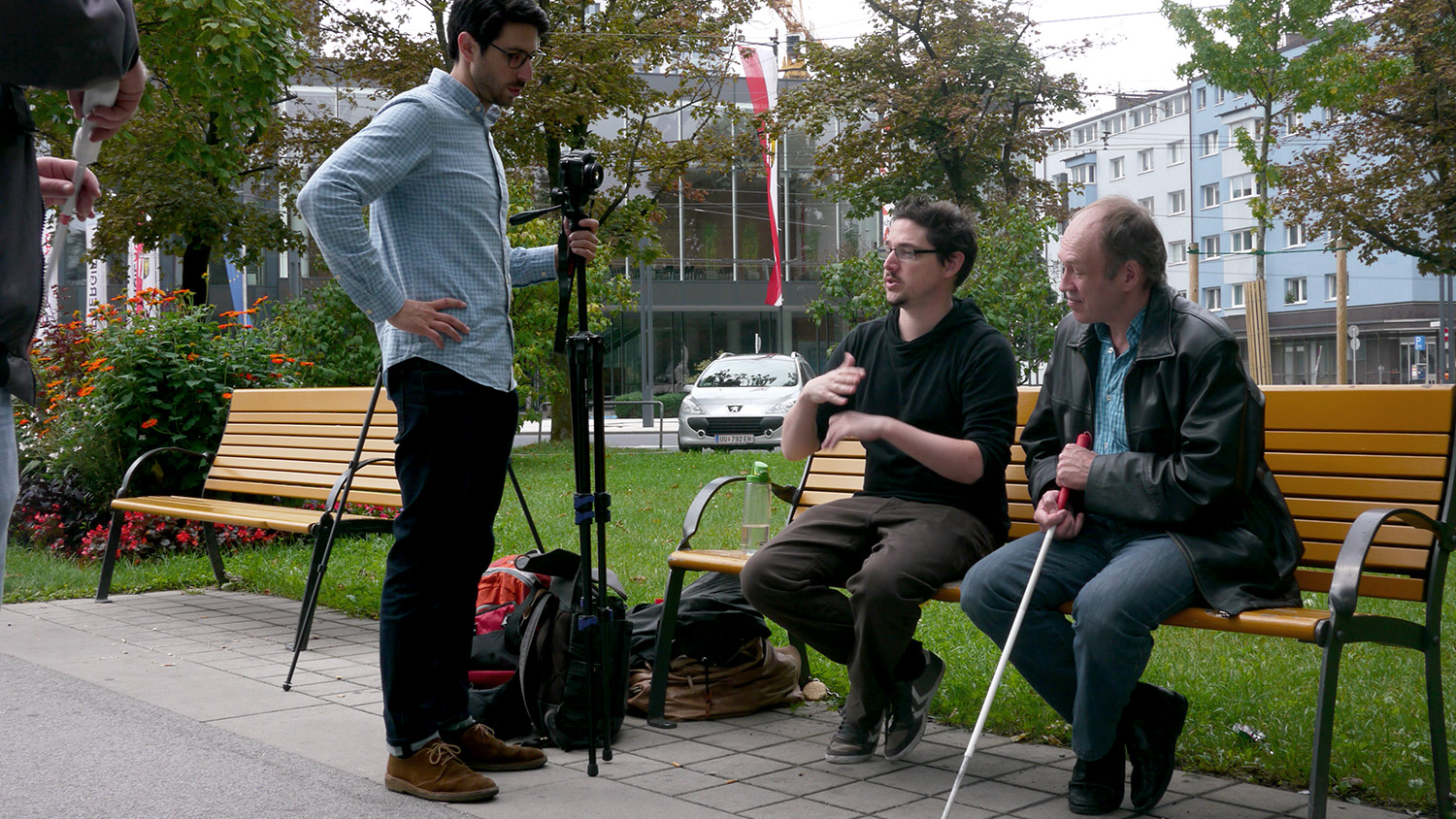The Interface Concept
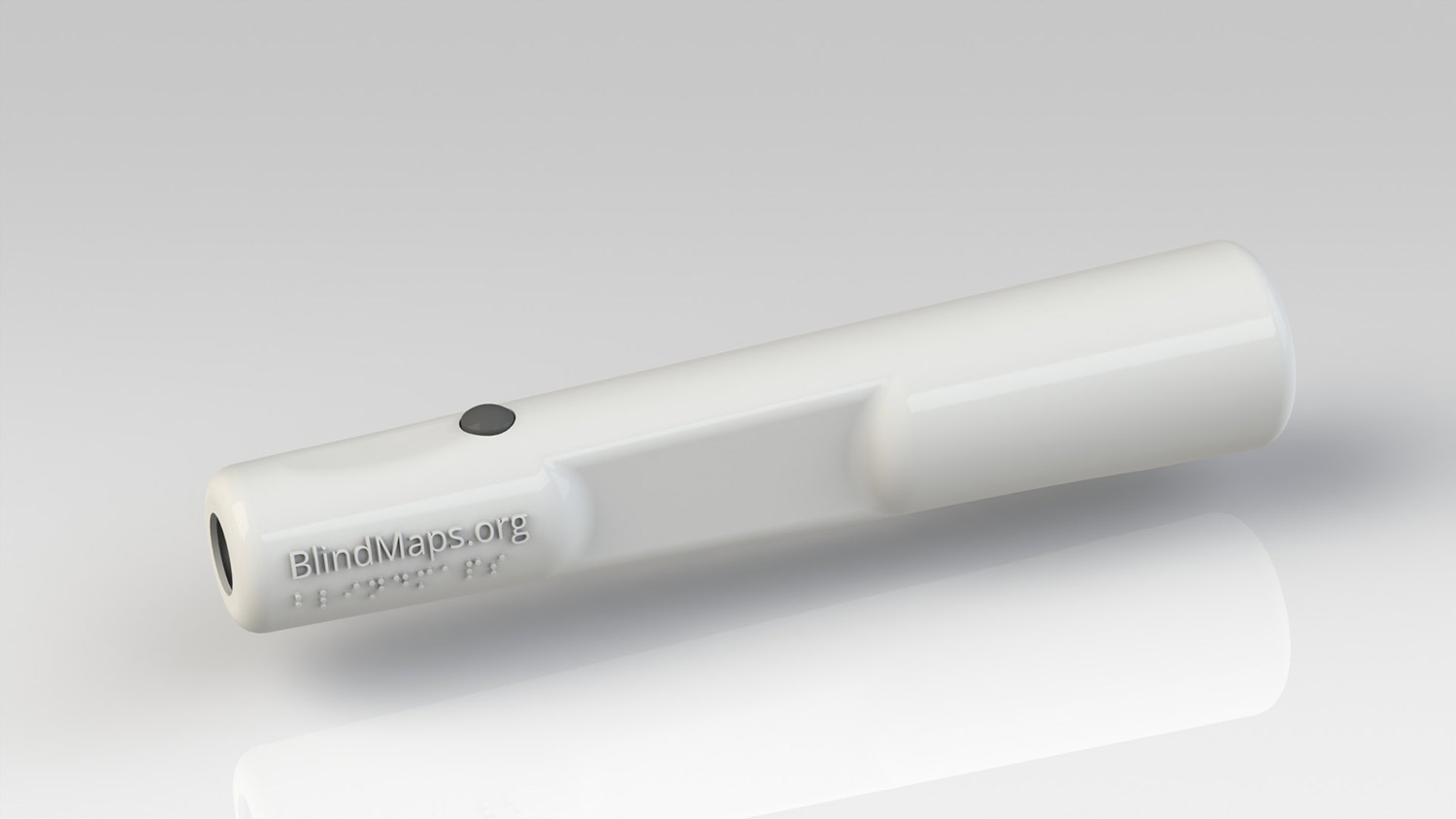
The white cane is the single most important tool for blind people to orientate themselves in their immediate environment. Our basic idea is to make the white cane a connected device which can act as an interface to the urban environment and to the user’s smartphone. The goal is to offer a seamless experience while walking/navigating through the city. The interface has to be minimally invasive and does not conflict too much with their senses, so that users can use their senses where they are needed most.

The grip-interface itself can be screwed to a white cane’s stick to turn it a modular system, where different versions of the interface could be used for different settings. Also, the visually impaired who are not always relying on white canes to walk could use the interface without the stick mounted to the grip.
(First Prototype) Features & Use-Cases
Location Finding (via beacons)
![]()
Easily locate points of interest both indoors and outdoors by triggering the beacon to sound out the name of the location directly from the white cane’s grip - allowing to quickly tell its direction and distance. As you approach each beacon, the grip pulses vibrations of different lengths to give accurate distance feedback to the beacon.
BlindSquare Remote Control
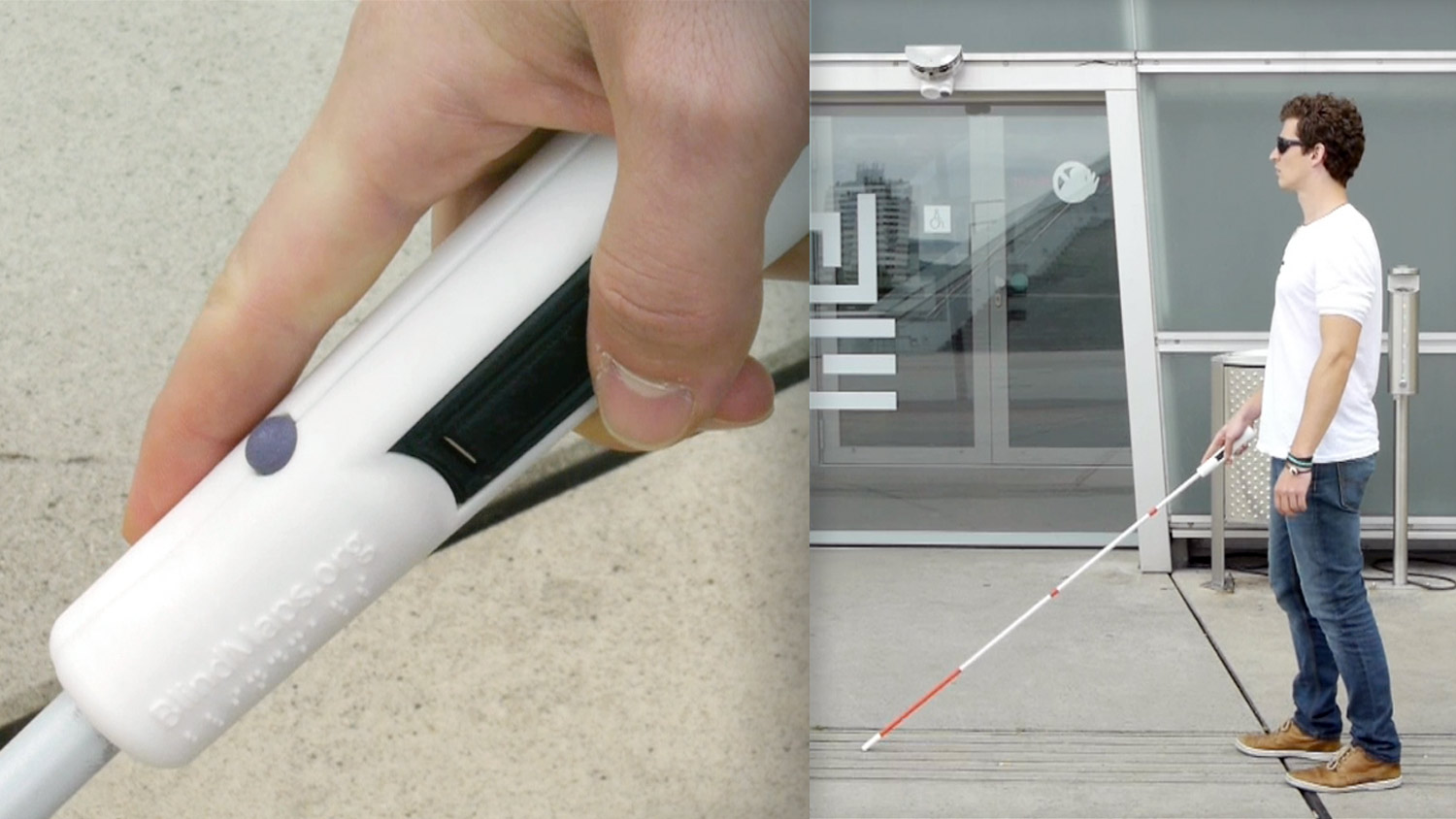
Control the popular BlindSquare iPhone App directly from the white cane’s grip without the need to pull it out of your pocket. As you travel and discover new areas, you have realtime and context-specific access to descriptions of the environment, points of interest, and street intersections.
- 1 press = Where am I? Read the current location.
- 2 press = Track a location saved in My Places
- 3 press = Look Around
Access Realtime Public Transport and City Infrastructure Information
Using ID Signal Control, activate a speaker on a street corner, the tram, train or bus to sound out its number and any useful information simply by pressing a button on the white cane‘s grip.
How we built it?
All the communication between the grip, phone and beacons happen using Bluetooth LE. At this prototype phase we’re using the open source RFduino, which combines the Arduino platform with a Bluetooth LE module. It’s easy to prototype with, really small and has very low power consumption. To build the beacon and grips, we used the Replicator 2 3d printer at FROLIC Studio and once we were happy with the feel and form, we printed high quality nylon-based plastic versions.
